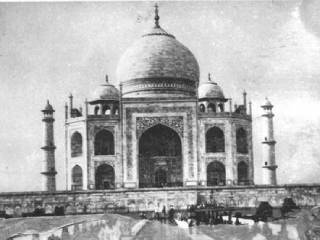Author: A Surya Prakash
With State Assembly election in Uttar Pradesh just round the corner, the United Progressive Alliance (UPA) Government at the Centre appears to be obsessively concerned with issues concerning the Muslim community. Central to this "Muslims first" agenda is the Government’s preoccupation with the recommendations of the Sachar Committee that examined the social, economic and educational status of Muslims in India. This Muslim-centric approach to governance makes one wonder whether the Government is oblivious to the fact that only 13.40 per cent of the citizens are Muslims and that the rest of us belong to many other religions? Has the Government completely lost track of this demographic reality?
Take the case of the management of wakfs in the country. The Sachar Committee has devoted an entire chapter to this issue and spoken of it as if Muslim religious institutions are specially targeted by the Indian state. This is absolute hogwash. In fact, if there is one religious community in India which has suffered from gross governmental encroachment in its religious affairs, it is the Hindu community.
Wakfs are bequests made by Muslims in the name of god and include mosques, dargahs, maqbaras, etc. The Sachar Committee says the total area under wakf properties in India is about six lakh acres and its book value is Rs 6,000 crore. However, the market value of these lands is much higher. For example, the current value of wakf properties in Delhi alone is estimated to be in excess of Rs 6000 crore and that of wakf properties in the country could be a staggering Rs 1,20,000 crore. If properly managed, these properties could give an annual return of anywhere between Rs 12,000 and Rs 24,000 crore (approximately $2.5 to five billion). This is more than enough to meet the basic health and educational needs of poor Muslims but wakf properties are mismanaged and, therefore, do not give this kind of return.
But the Sachar Committee does not see this as the failure of the Muslim community to prudently manage its internal affairs. The committee thinks that "blaming others" is part of its terms of reference and so blames the Union Government, the State Governments, local bodies and every body else including the Department of Archaeology. The Sachar Report says that wakf properties, where specific religious rites are observed, should not be included in land acquisition. Shall we then apply this rule uniformly across religious communities?
Pseudo-secular vandals have been undermining Hindu religious institutions for decades and citizens belonging to other religious groups including the tiniest religious minority – the Parsis – are coping with problems of encroachment and governmental apathy vis-à-vis their institutions for decades. Such is the extent of interference in the administration of Hindu temples that this calls for a major inquiry. If wakfs warrant a whole chapter in the Sachar report, then surely the naked invasion of the sanctum sanctorum of Hindu religious affairs by the so-called secular state warrants a probe by a national commission.
Here are a few examples of what the "secular state" is doing to Hindu religious shrines. In 2001-02, for example, the revenue from Hindu temples in Karnataka was Rs 72 crore. Of this the State Government spent just Rs 10 crore on renovation and maintenance of these temples. On the other hand, it diverted Rs 50 crore to madarsas, mosques and the Haj Committee and Rs 10 crore to Christian institutions and churches!
Such interference in Hindu religious institutions and diversion of temple funds has become a regular feature in many States, including Karnataka and Kerala. It has also reached monstrous proportions in Andhra Pradesh ever since Mr YS Rajashekhara Reddy has become the Chief Minister of the State. Cashing in on Hindu passivity and the remarkable success, he has thus far achieved in masking his religious affiliation (he is a Christian) and his communal agenda. Mr Reddy’s Government has also had the temerity to interfere with the affairs of Lord Balaji’s Temple at Tirupati.
The Reddy Government first struck a blow against this sacred shrine of Lord Balaji, who is also known as the Lord of the Seven Hills, when it claimed that only two of the seven hills are scared. Then, there are mounting allegations that the Government is diverting Tirupati temple funds for a drainage scheme and for developing an idgah maidan and is ready to sell off one lakh acres of lands belonging to Hindu temples in the State. The other issue is appointment of non-Hindus in temple administration. Attempts are also on to grab temple lands to promote the Congress party’s political propaganda. Some time ago, the Devalaya Parirakshana Samithi had to move the Andhra Pradesh High Court to restrain the State Government from taking possession of temple lands in the State to provide house sites under the "Indiramma scheme".
In Kerala, when Mr Oomen Chandy was the Chief Minister, an attempt was made to divert Guruvayur Devaswom funds for installation of a sewage treatment plant and a water supply scheme for the area. In Orissa, lands belonging to the famous Jagannath Temple at Puri are being sold by Government to deal with the temple’s financial crunch- something brought about by gross mismanagement of the temple’s affairs by the Government.
Interestingly, the Sachar Committee also refers to The Ancient Monuments and Archeological Sites and Remains (AMASR) Act, 1958, and talks as if only Muslim religious and cultural places are affected by this law which seeks to preserve ancient monuments and archeological sites in India. It says, "There are innumerable cases where the wakf property, despite being a place of worship and of religious reverence, cannot be touched by the Wakf Board because it is declared as protected monument." Lest every member of the Union Cabinet be carried away by Sachar’s myopia, I would like to point out that a large number of Hindu temples are also deemed to be protected monuments. At last count, there were 1,098 temples which were "Centrally protected" and maintained and conserved by the Archaeological Survey of India. So, what is so unusual about Muslim religious places coming under the ambit of the AMASR Act?
This reckless policy of Muslim appeasement will have terrible consequences, one of which will surely be diabolical encroachment into Hindu religious space. If Hindus are not on their guard, the UPA will succeed in making secularism synonymous with anti-Hinduism.
(Courtesy: The Pioneer; January 16, 2007)
http://www.socialcause.org/getarticlefromdb.php?id=306

 Mizoram: EC accepts Christians’ demand to defer counting on Sunday, but what if Hindus had made a similar demand?
Mizoram: EC accepts Christians’ demand to defer counting on Sunday, but what if Hindus had made a similar demand? Sign Petition : Immediately repeal the draconian and unconstitutional ‘The Waqf Act, 1995’
Sign Petition : Immediately repeal the draconian and unconstitutional ‘The Waqf Act, 1995’ Shriram : Sri Lanka’s saviour
Shriram : Sri Lanka’s saviour Why it is so cool to malign Hindu gods and goddesses, but it may not be that easy now
Why it is so cool to malign Hindu gods and goddesses, but it may not be that easy now Shocking Truth of Taj Mahal exposed by Late Pujya P. N. Oak
Shocking Truth of Taj Mahal exposed by Late Pujya P. N. Oak How are Hindus treated in states where they are in a minority?
How are Hindus treated in states where they are in a minority?